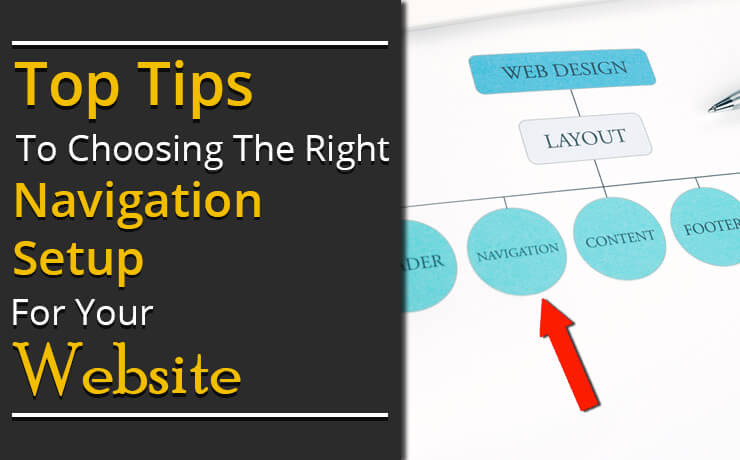Top Tips To Choosing The Right Navigation Setup For Your Website

Chad Faith
Director of Content

Users are more willing to spend more time on your site if it’s easy to navigate. This encourages them to stick around long enough to convert. After all, your website’s ultimate goal is to generate more leads and sales for your business, right? Yes! The right navigation setup is key to improving user experience. Let’s find out how you can select the right navigation setup for your new website design:
Determining the Ideal Navigation Elements via the Card Sorting Technique
User-experience techniques such as card-sorting can help you understand the minds of your website visitors. This knowledge enables you to design your site’s navigation from their standpoint. Yes. You do not require any UX experience to run this exercise. To get started, simply invite a group of volunteers in for this experiment. They should be individuals who are not working in your organization.
Once you are ready, lay out a stack of index cards on the table. Each index card represents an important page on your website. Next, get the participants to organize the cards, one by one, in any way they see fit. Your job is to look out for trends in how each of your participant group the “pages” on your website. In addition, ask them how they would name each category. Congratulations! You now have a basic backbone of your site navigation.
Narrowing Down Your Choices
When it comes to site navigation, the saying, “the more, the merrier” isn’t always better. This means that having hundreds of links on your home page isn’t the answer. You should limit the number of link in your main navigation. Here’s why:
- A site’s homepage holds the highest amount of authority with search engines. It works this way because more sites tend to link to your homepage than to one’s inner pages. You can say that this “authority” flows down to deeper pages through your navigation tunnel.
- If you show tons of links in your home page, that authority will be diluted as it is being passed down to deeper pages. This makes it harder for your inner pages to get ranked.
- When you keep your navigation concise, you allow authority to flow to each individual page. They are more likely to rank this way.
So, the moral of the story is to feature fewer items in your main navigation. It will be good for search engines.
Getting Things in Order
You cannot cut corners when it comes to the order of your site navigation. Links on either end of the navigation tend to create a stronger impression on webpage viewers. This phenomenon is the result of the primacy and recency effects. Words that are featured at the first or last position in a list possess a greater magnetic effect when it comes to capturing the attention span of viewers. Start thinking what is most important for your typical visitor. List the important items at the beginning of the navigation and the rest in the middle. Keep in mind that “Contact” should always be the last item on the list.
The Different Ways to Phrase Your Website Navigation
You should phrase your navigation options according to the type of organization or business you run. When you choose the words to use in your navigation, make sure they are terms that your customers typically use.
Audience-based website navigation
If your business targets multiple audiences, you can consider a sub-navigation or an audience-based navigation option. This will work if the visitors can easily classify themselves.
Action-based website navigation
Action-oriented navigation options are suitable for websites that are highly transactional in nature. It’s important to ask visitors whether they primarily visit your site to acquire information or take other specific actions.
 Free
Consultation
Free
Consultation Free
Google Ads Audit
Free
Google Ads Audit







